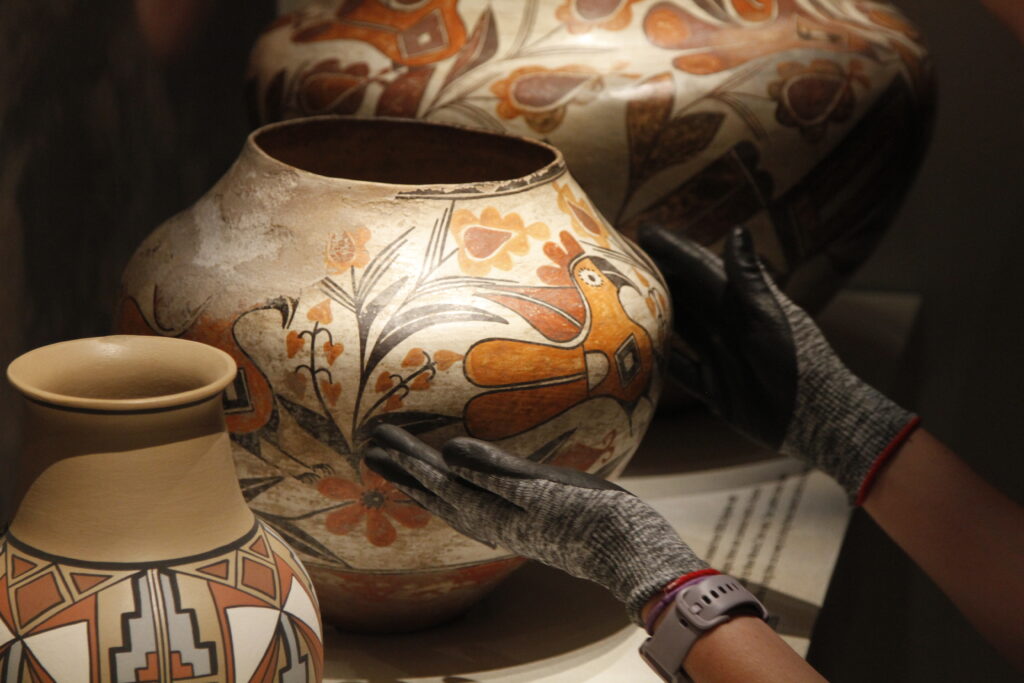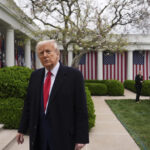60 curators, 1 show: Native Americans pick favorite pottery
Newslooks- SANTA FE, N.M. (AP)
Native American voices and artistry are at the core of a new traveling exhibition of clay pottery from the Pueblo Indian region of the American Southwest, as major art institutions increasingly defer to tribal communities for displays of ancestral art and artifacts.
In all, 60 Native American artists, museum professionals, storytellers and political leaders collaborated to curate the exhibit.
Each picked a few of their favorite pieces from institutional collections in New Mexico and New York that didn’t always defer to Indigenous perspectives. Personal statements and sometimes poetry accompany the clay ceramics.
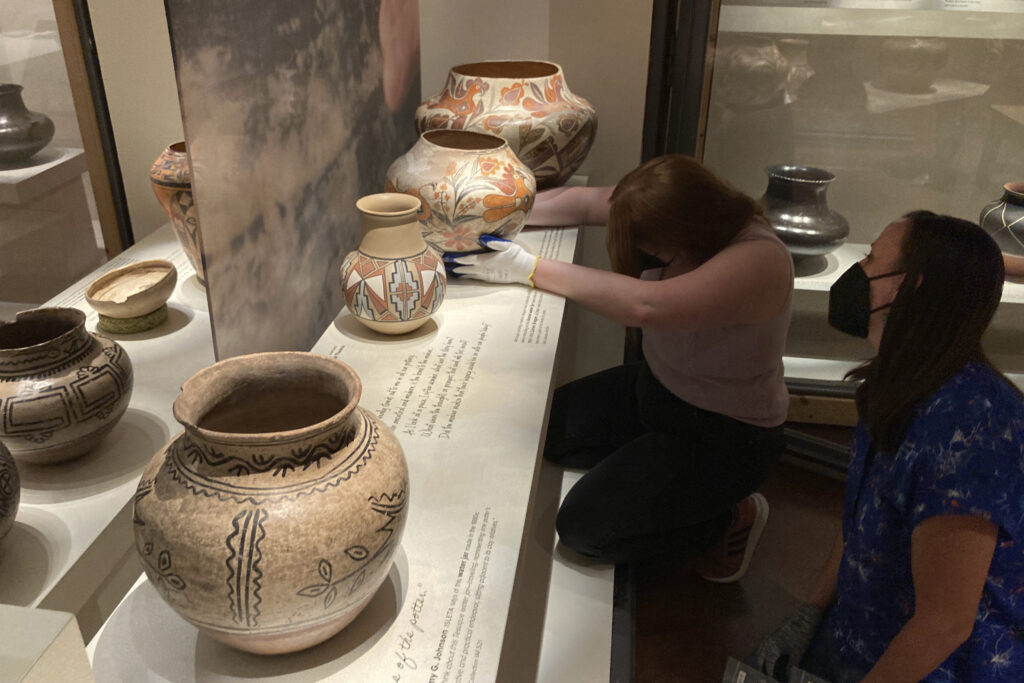
Among the many curators, Tara Gatewood — a broadcaster and familiar voice across Indian Country from the daily talk radio show “Native American Calling” — picked out an ancestral jar decorated with curling arrows that was created roughly 1,000 years ago.
For the exhibition, Gatewood posed a few heartfelt questions to the pot’s unnamed creator.
“Is your blood mine?” she said. “Where else beyond the surface of this vessel do your fingerprints appear on the blueprint of my own life?”
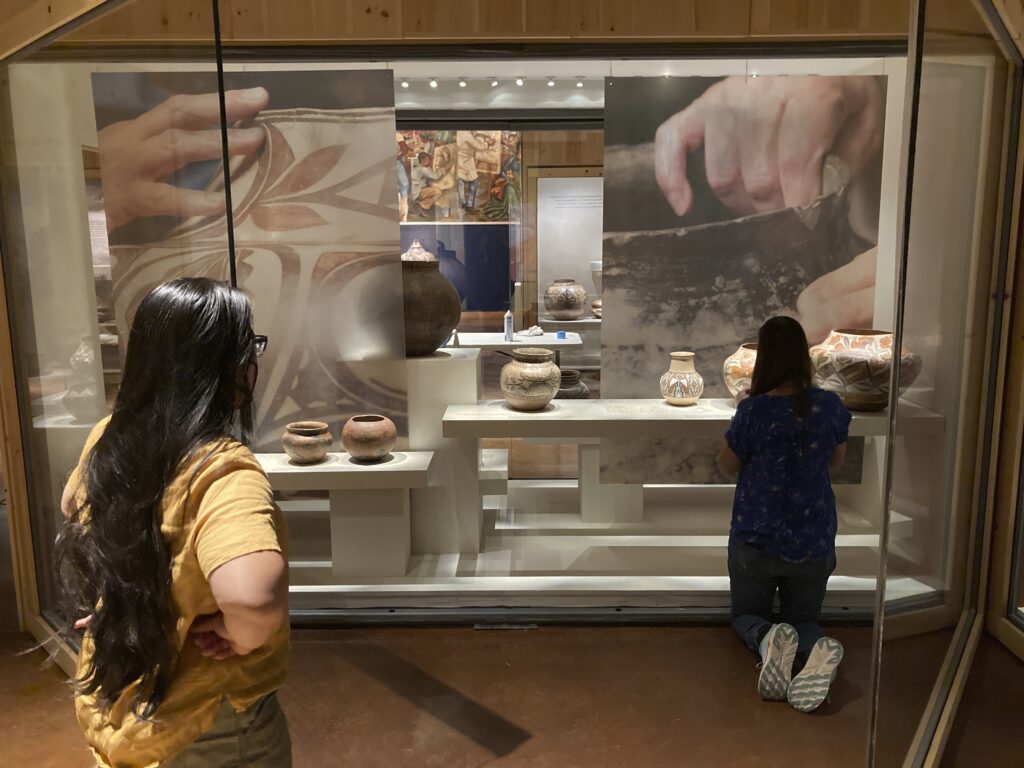
The exhibition “ Grounded in Clay ” debuted July 31 at the Museum of Indian Arts and Culture in Santa Fe. It travels next year to the Metropolitan Museum of Art in New York, before additional stops at the Museum of Fine Arts in Houston and the Saint Louis Art Museum.
The bulk of the exhibit’s roughly 110 ceramic pieces are borrowed from the Indian Arts Research Center — once reserved for visiting scholars and archaeologists — at the campus of the century-old School of Advanced Research, set amid an affluent Santa Fe neighborhood of stuccoed homes.
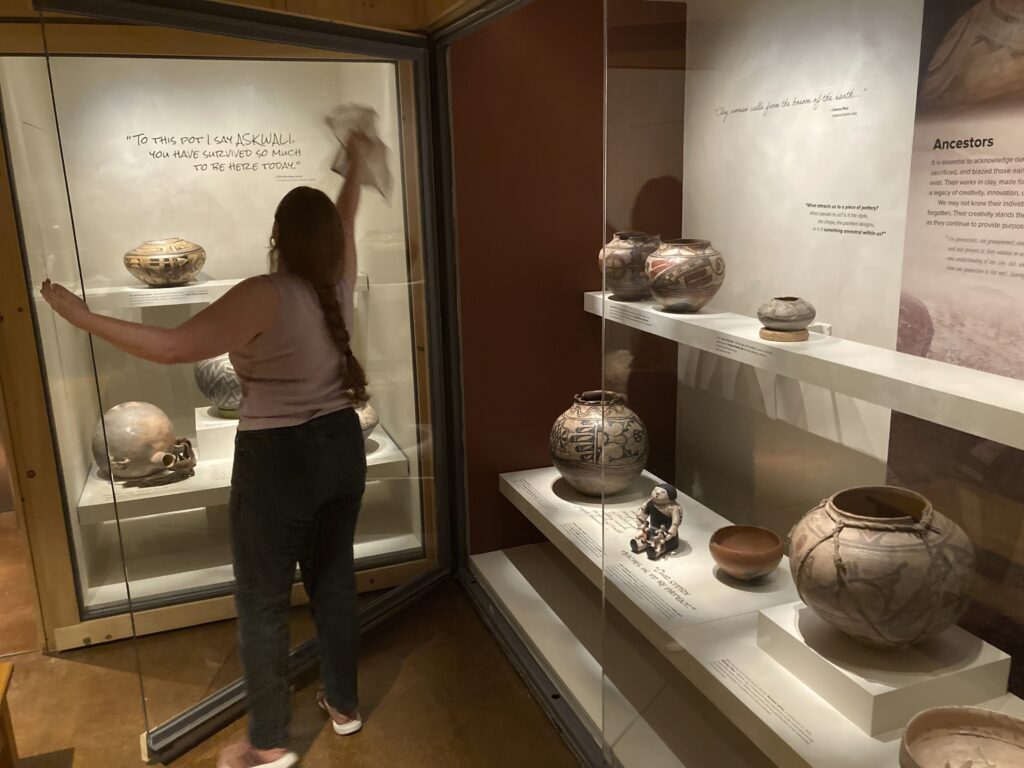
Efforts have been underway at the center for more than a decade to shift how Indigenous art and artifacts are cared for, displayed and interpreted — under guidance and collaboration with Native communities.
The changes were initiated under Cynthia Chavez Lamar — recently named the director of the Washington-based National Museum of the American Indian in Washington, D.C. The effort also created a set of guidelines for collaboration that can help Native American communities everywhere communicate and build trust with museums.
Curators on “Grounded in Clay” hail from the 19 Native American communities of New Mexico, the West Texas community of Ysleta del Sur and the Hopi tribe of Arizona.
They include an array of accomplished potters, jewelers, bead makers, fashion designers and museum professionals — among them, sculptor Cliff Fragua, who created the likeness of 1680 pueblo revolt leader Po’pay that stands in National Statutory Hall in the U.S. Capitol.
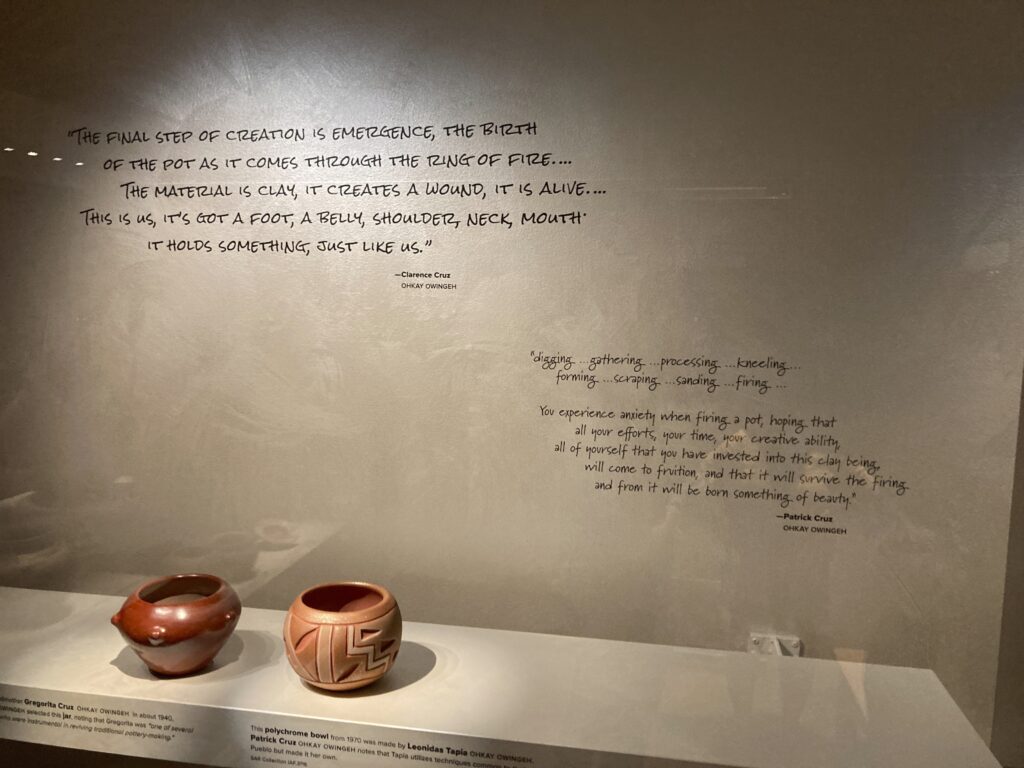
Elysia Poon, who guided the curating process over the course of more than two years, paced the museum gallery during final touches prior to opening.
“We try to make sure everyone’s voice is represented in some way,” said Poon, director of the Indian Arts Research Center. “It’s either in the label, or the quote up here, or in that panel. It’s in poetry form, other ones are in prose, others are a little more abstract in how they write. Some really reflect on the pot itself … or fuzzy memories of growing up around pottery, how this pot inspires memory.”
Pueblo pottery traditions rely on coiling strands of clay into an array of shapes and sizes — without a spinning pottery wheel. Pots, plates or figurines are often fired near the ground within improvised outdoor kilns.
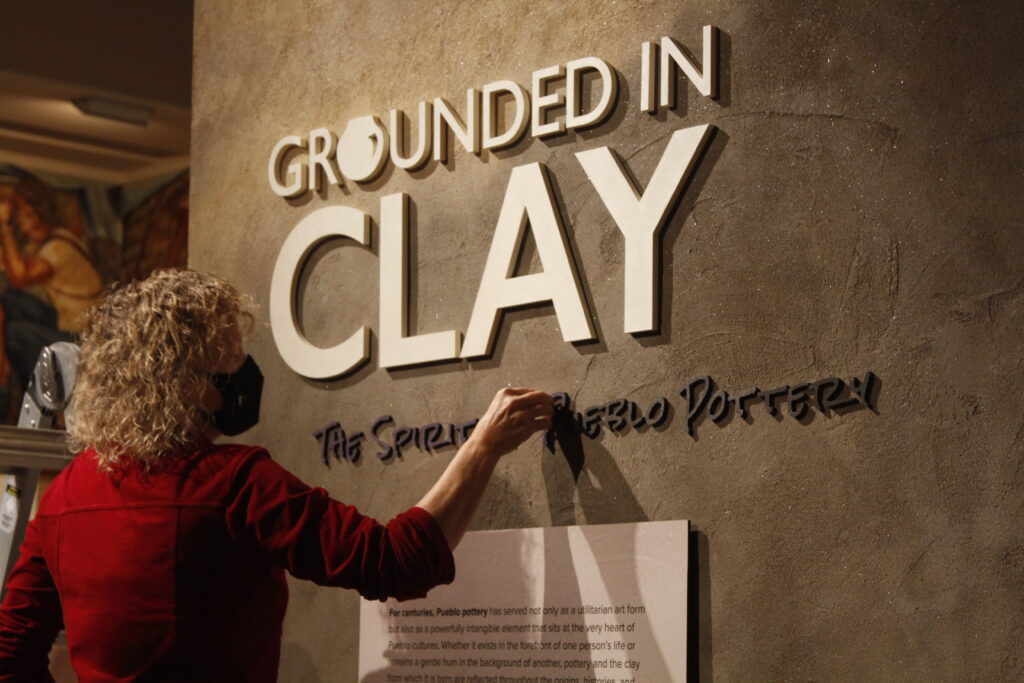
Brian Vallo, a consultant to metropolitan museums and governor of Acoma Pueblo from 2019-21, chose two pieces for the new traveling exhibition — both with unmistakable ties to Acoma, known for its mesa-top “sky city” and hundreds of contemporary artists and artisans.
He found them in the New York-based Vilcek Foundation, a participant in the traveling show.
He says something beautiful and refreshing awaits experienced museum-goers and curious tourists.
“It’s Native voices, and it’s even the items that are selected by Native people themselves, not the institutions,” Vallo said. “They’ll appreciate that these cultures survived and are thriving, and the creative spirit of our people is very much alive.”

